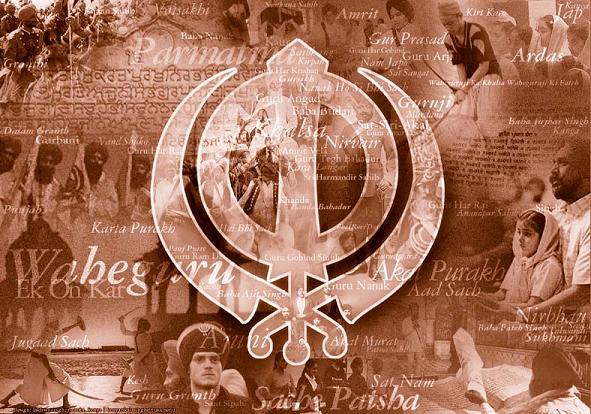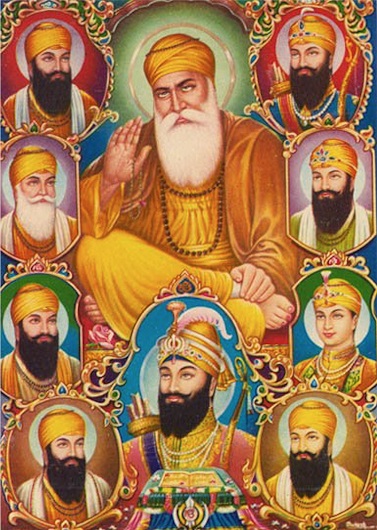There has been an ongoing controversy about the correct date of birth of Guru Gobind Singh Ji. The traditionally accepted date of the Guru's birth is Poh Sudi 7, 1723B.K viz December 22, 1666 AD.
This date has been mentioned in the 'Post Guru Period' works of writers, such as Koer Singh (Gurbilas 1751), Sukha Singh (Gurbilas 1797), Santokh Singh (Suraj Parkash 1843) and Giani Gian Singh (Twarikh Guru Khalsa 1880), followed by many other writers during the 1st half of the 20th century. Though none of these books were written in the Guru Period (1469-1708), Bhai Santokh Singh's 'Suraj Parkash', which appeared more than 100 years after the death of Guru Gobind Singh Ji, was the most influential. Almost all sikh clergy and common man regarded this book as a true account of events, so much so, that no Sikh historian was inclined to look for any other document written in the actual Guru Period.
However, after the middle of the 20th century, with the discovery of 'Bhatt Vahis', new facts came to light, which made a serious researcher to look for any other unrevealed information including the 'Panda Vahis', relating to the dates and events of the Guru Period, including the birth and death of Guru Gobind Singh Ji. As a result we can safely conclude, that now in the 21st century, there is hardly any research scholar of Sikh history who would argue against the fact that Guru Gobind Singh was actually born on Poh Sudi 7, 1718 B.K viz December 1661 A.D.
Dr. Kirpal Singh, Rtd Professor and Head of Department of Punjab Historical Studies at the Punjabi University, Patiala had discussed this subject in detail in his book 'Perspectives on Sikh Gurus', published in 2000 by the National Book Shop, Delhi. The following extract from his observations on the above subject (chapter 10, page 225) clearly indicates that Guru Gobind Singh Ji was born in December 1661 A.D.
One of the protagonists of this date is Gulab Singh of Nirmla Order who has recorded this date in his Gurparnali (Vide Gurparnali Gulab Singh, in Gurparnalian-Randhir Singh page 119). Bansawali Namah Kesar Singh Chibber (Singh brothers, Amritsar P.125), also gives this date. If we accept the former date (traditionally known) viz 1666 A.D. then Guru Gobind Singh's age at the time of martyrdom of his father was nine years. If we accept the later date (newly revealed) viz 1661 A.D. then the age of Guru Gobind Singh at the time of his father's martyrdom was fourteen years. Several English authors like J.D Cunningham and Mohammed Latif have stated that Guru Gobind Singh at the time of his father's martyrdom was fifteen years age....
The discovery of Bhatt Vahis by Giani Girja Singh has brought forth all those dates which were connected with the Sikh Guru and recorded by various Bhatts. Guru Kian Saakhian by Sarup Singh Kaushik (1709 A.D.) has also been published. It gives Guru Gobind's date of birth corresponding to 1661 A.D. Based on Bhatt Vahis, a new book entitled 'Correct Date of Birth of Sri Guru Gobind Singh' has been brought out by G.B Singh and D.R. Narang. The authors have argued at length that the correct date of birth of Guru Gobind Singh was December 18, 1661 A.D. Their main argument is the Panda Vahis and Bhatt Vahis giving details of travels of Guru Teg Bahadhur. According to this date, Guru Teg Bahadhur visited Patna twice in 1661 A.D. and 1666 A.D.The supporting dates of Guru Teg Bahadhur's visit to Allahabad and Banaras have been discovered from Panda Vahis. Thus from this angle they prove that the date of 1661 A.D. as year of birth of Guru is more probable.
In order to understand fully the above conclusion, it is important to study both the previously known and unknown documentary literature associated with the Guru Period (1469-1708). In the last thirty years or so, modern researchers have been able to identify the following literary works as useful sources of historical facts about the Gurus in that period. These include Janam Saakhis, Varan Bhai Gurdas, Hukamnameh, Gurbilas Patshahi Chheh, as well as Gurbilas Patshahi Dass (Koer Singh), Gurbilas Patshahi Dass (Sukha Singh), Guru Sobha Granth (Sampat), Mehma Parkash Parchian (Sewa Das Bhalla), Gian Ratnavli (Bhai Mani Singh), Bhatt Vahian (Various Bhatts), Gurukian Saakhian (Bhai Swroop Singh Kaushish) etc. However, the study of the above literature reveals two notable facts. Firstly, that except for Bhatt Vahis or Guru Kian Saakhian, the dates of events are hardly or rarely mentioned in these writings and secondly, the Janam Saakhis are the least reliable source, as they were not written in the Guru Period, but much later after their death, some of them hundred years or so later. They were indeed written on the basis of so called Bhai Bale Wali Janam Saakhi, which inspite being an earlier product is questionable for the authenticity of its writer/s, as well as, for a number of hearsay miracle stories included in it.
On the other hand 'GURU KIAN SAAKHIAN' have been regarded by researchers as much more authentic and reliable source of historical events and dates of the Guru Period starting with Guru Horgobind Ji. This book is a collection of 112 Saakhis (Stories) with a maximum number (37-112) relating to the life of Guru Gobind Singh Ji.
In this context it is also important to understand the significance of Bhatt Vahis and Panda Vahis. The word 'Vahi' literally means a record book, commonly used in India since Middle Ages. Traditionally, the 'Pandas' and 'Bhatts' as chroniclers always noted down important events or incidents including births and deaths with regard to certain persons or personalities. Though not highly educated, they were reasonably professional in their own field. The difference being, that the 'Pandas' of Hardwar seldom or never visited their clients, and their notes in the 'vahi' mainly reflected their clients visit to Hardwar. Whereas, the Bhatt Vahis notes were mostly based on their own visit or some contact with their clients, (usually a selected personality or a household like the Sikh Gurus). Some 'Bhatts' were also some kind of bards besides keeping the geneology of their clients. (Actually, a number of 'Bhatts' were very dedicated disciples of the Gurus, and their musical verses have been included in the Guru Granth Sahib Ji).
One has to take into account that everything written in 'Bhatt Vahis' cannot be relied upon one hundred percent. In his 'Appraisal' of the 'Guru Kian Saakhian's English Adaptation, Published in 2005, Dr. Balwant Singh Dhillon, (Head of Guru Nanak Studies, Guru Nanak Dev University, Amritsar) states,
Guru Kian Saakhian which surfaced in the 1970's and has been used very enthusiastically by some scholars is such a source of Sikh history which has never been subjected to rigorous methodology to test its authenticity
...Further on he concludes,
In some cases information provided by the author of Guru Kian Saakhian is very unique and has come to us for the first time. For example code of conduct of the Khalsa 'Saakhi # 59-60', investiture of Aadi Granth with Guruship by Guru Gobind Singh Ji and 'Saakhi # 112' etc present graphic accounts which are not available anywhere else. These factors enhance the value of Guru Kian Saakhian as a historical source.
It is hoped that the above references and testimony in the form of a short essay will help to end this needless controversy regarding the correct date of birth of Guru Gobind Singh Ji.
© Copyright Gurinder Singh Sacha
Please acknowledge quotations from this article
Articles may be published subject to prior approval by the author

